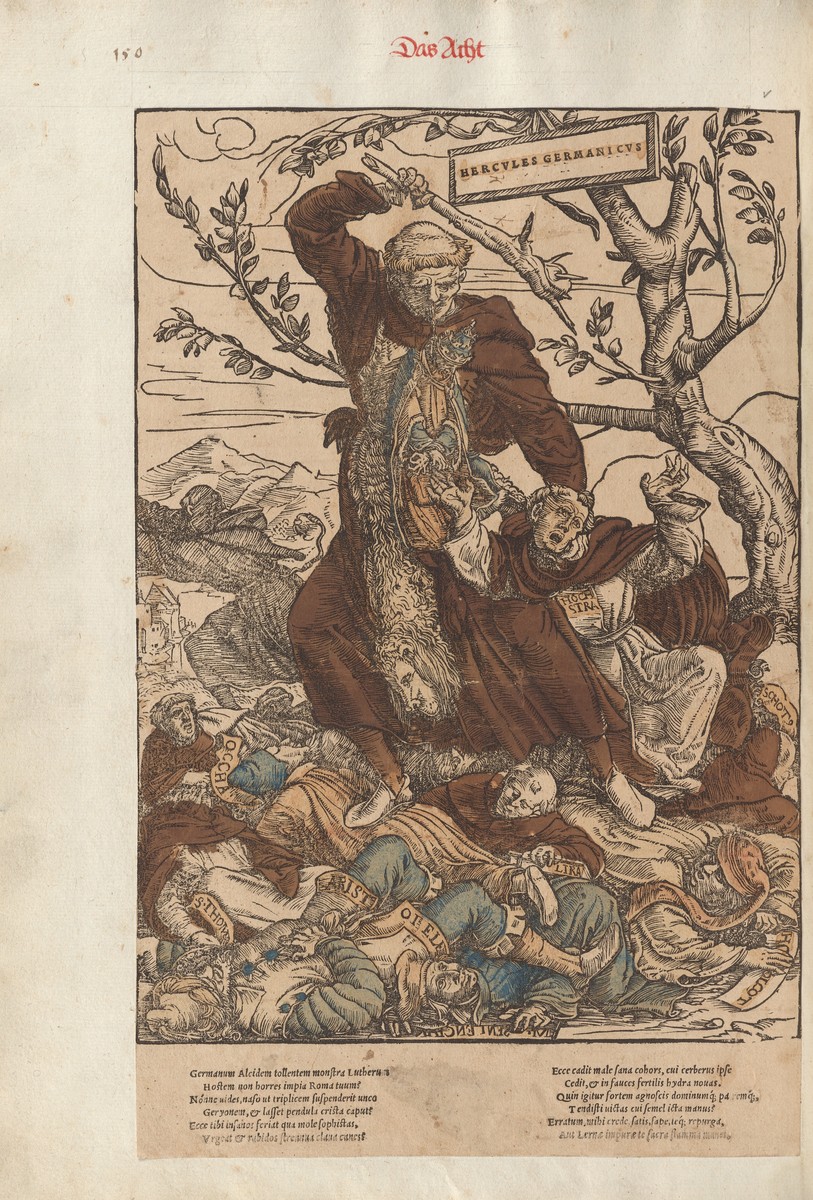Hans Holbein the Younger, Luther as Hercules Germanicus (c. 1519)
Abstract
This woodcut by Hans Holbein the Younger (c. 1497–1543) shows Protestant reformer Martin Luther (1483 –1546) bludgeoning scholastics and inquisitors with a spiked club; the image was meant to conjure up Hercules’ slaying of the nine-headed hydra. A doll of Pope Leo X is suspended from a ring in Luther’s nose. This depiction of Luther as a “German Hercules” is a very early example of the pictorial staging of Luther as both a German national hero and an ally of the anti-Roman humanists. At the same time, he is also depicted as a German ruffian. Illustrated broadsheets of this sort were a popular media form in the sixteenth century, and this image would have been accessible to broad audiences.
Source

Source: Hans Holbein the Younger (1497–1543), Luther as Hercules Germanicus, colored woodcut, c. 1519. Schweizerchronik bis zum Jahre 1534. Das Achted Buch, c. 1519. Zentralbibliothek Zürich, Ms A 2, p. 150. Available online at: https://doi.org/10.7891/e-manuscripta-48182
Zentralbibliothek Zürich
Further Reading
Caspar Hirschi, Wettkampf der Nationen. Konstruktionen einer deutschen Ehrgemeinschaft an der Wende vom Mittelalter zur Neuzeit. Göttingen: Wallstein Verlag, 2005.
Ute Planet, “Nation und Nationalismus in der deutschen Geschichte,” Aus Politik und Zeitgeschichte (Supplement to the weekly newspaper Das Parlament), vol. 39 (2004), pp. 11–18.
Alexander Schmidt, Vaterlandsliebe und Religionskonflikt. Politische Diskurse im Alten Reich (1555–1648). Leiden/Boston: Brill, 2007.
Reinhard Stauber, “Nation, Nationalismus,” in Enzyklopädie der Neuzeit, edited by Friedrich Jaeger, vol. 8, Manufaktur-Naturgeschichte (2008). Darmstadt, 2005–2012, columns 1056–1082.